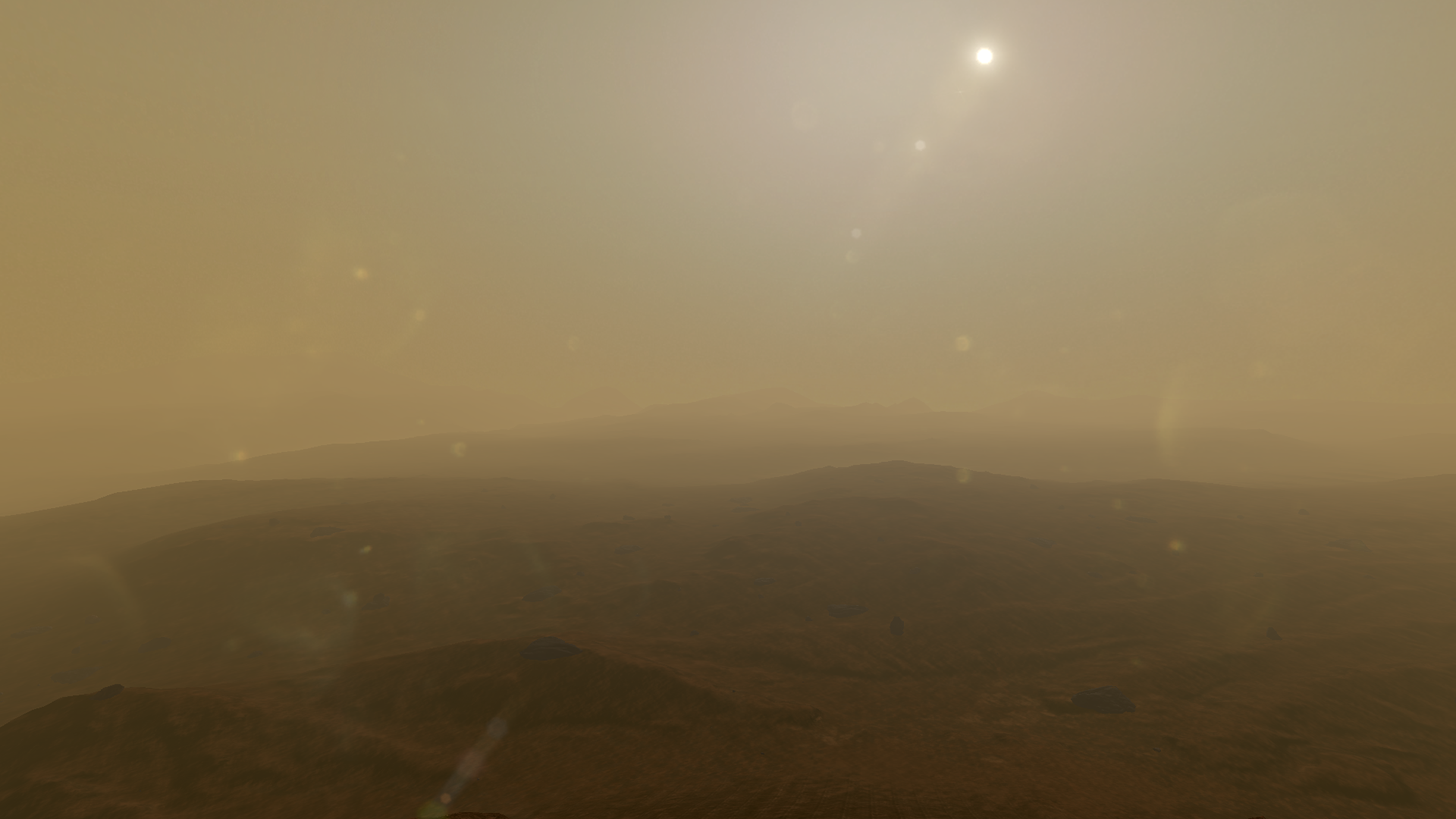Sorry for posting this a day late, but the wonderful and confusing tradition of the Iowa Caucuses put a wrench in my plans to post yesterday. This month we have been adding some crucial features to our Survival Sandbox mode, including the brand new unique map.
We wanted the Survival Sandbox mode to stand on its own with a different map built specifically to maximize replayability. Most importantly that meant creating a map that has entirely unique terrain formations. We are happy to say that this map is nearly complete. We still plan on adding more large rock formations that are not pulled from the NASA satellite data. Generally we like to lean more towards realism, but many of our sourced heightmaps are fairly sparse. Mars is incredibly geologically diverse on a macro scale, but on the micro scale it is mostly flat and empty. So while the following screenshots do have a decent amount of variation we will still add lots of cliffs and larger formations to fill in the gaps.
We are happy to say that this new map is exactly the same scale as the one we will eventually be using for the story mode. Nearly 25 square miles. This gives us a ton of room to work with for some randomization features that will be largely unique to the Survival Sandbox.
Above you can see a top down view of the entire Survival Sandbox map. The frame labeled "All Map Points" shows you all of our possible points of interest that can be randomized during each play through. Without giving away too many surprises for when we launch on Early Access, here are some basics of how the randomization works:
- The Pink labeled dots are potential habitat locations, nine in total. Every time you play you will start near a different habitat around the outer edge of the map. There will be three habitats spawned for each playthrough, but we use an algorithm to ensure that they always form a natural "path" across roughly one third of the total map area. In Survival Sandbox mode it is likely that you will need to make your way from one habitat to the next after you run out of supplies, so this placement algorithm should help keep the same map feeling fresh with a different path every play through.
- The Red labeled dots are our Waypoint Stations, 16 in total for each playthrough. These are important navigational checkpoints that help you in many ways we will be detailing later, but as you can see in the sample randomizations above they don't always appear in the same locations.
- The Dark Blue labeled dots are currently referred to as our "Primary Objectives". Each objective will be unique, but they all function as a sort of "oasis" in the vast Mars desert. They are carefully positioned hubs that can expand your overall search radius when found. One example might be a broken down rover that contains an oxygen refill tank and a battery for recharging your suit. As you can see above, we use another algorithm here to ensure varied placement of Primary Objectives.
- The Light Blue labeled dots are what we call our more general "Points of Interest". These will be our most heavily randomized objectives on the map. They are smaller and less important than Primary Objectives, but the more you find the more likely you are to maintain your extended survival on the red planet. These might be emergency food storage caches, downed weather balloons, geological research plots, or any number of other mission-related sites.
In general, the quantity and frequency of the sandbox map objectives may be greater than what you might expect in a real Mars mission, but we feel very good about the variety this adds to the gameplay and the real sense of discovery you get when stumbling upon these locations.
As you can see, our Survival Sandbox mode is not entirely procedural, nor is it entirely static. We are using light randomization features to add variety for replayability. We are applying this method with our habitat interiors as well. There will be nine possible habitat interiors to match our nine possible habitat spawn locations. So, even if you happen to spawn at the same habitat location on the map, the interior of that habitat may not be the same as it was before. Since each of these nine interiors are still designed by hand it allows us to have a higher fidelity for the art and especially the lighting. We have reintroduced the use of lightmapping to have the most realistic rendering possible. Below you will see our first pass at using our new lightmapping and reflection probe setup. You might also notice a few shots where we have managed to swap the lightmaps to simulate a power outage which you may encounter on your mission simulation.
Next month I hope to be able to share some details about our "survival event" system which will effectively serve as your primary antagonist for the Survival Sandbox mode. We really want you to feel like Mark Watney dodging curve balls left and right that might drastically impact your chances of survival on Mars. Creative problem solving and resource management will be key to overcoming the odds.
If you have any questions let us know in the comments!













